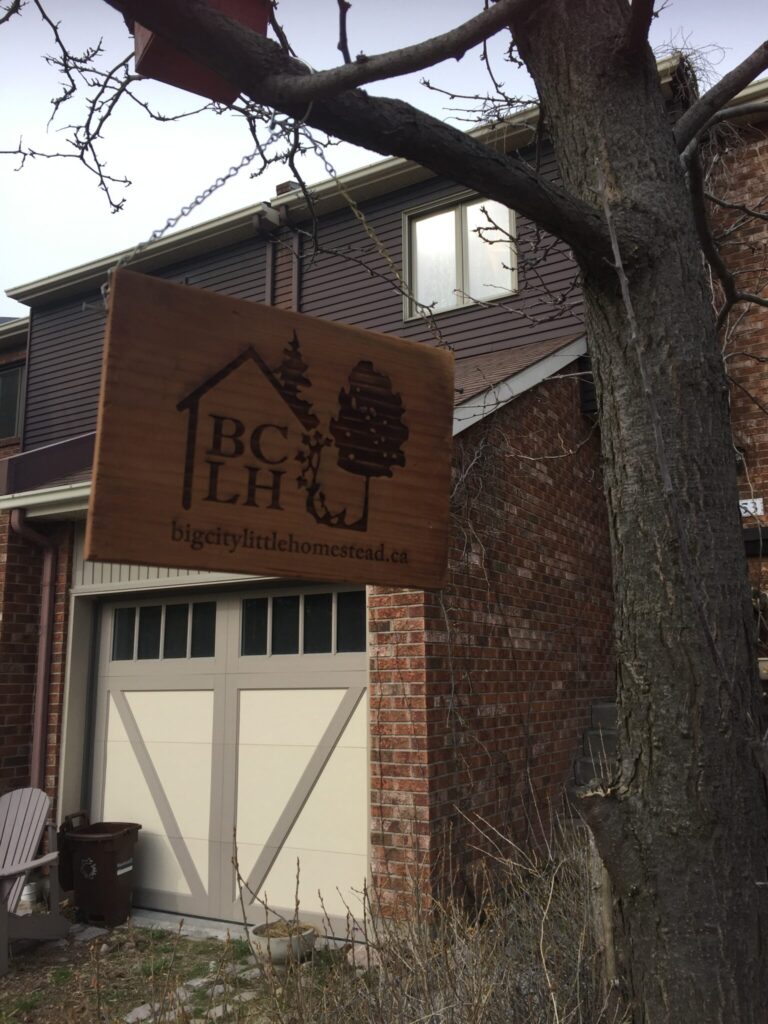In 2015, I posted about converting a standard residential parking spot into a green driveway. It’s a pictorial, part of our Project portfolio. Three months later (from mid-May to August), I’d gotten used to the results and I was quite happy!
Having now seen the results over the next seven seasons, I’m still pleased. It’s like an extra yard with cobblestone wheel paths, and after I got rid of my car, a space for my Adirondack chair.
Winter conditions
In February, the driveway is typically under a foot and a half of snow. With no car, I have little need to shovel it out. But if I did, the effort of shovelling a green driveway is different than that of a standard one.
For example, you cannot use salt, but nor do you need to clear the driveway right down to the ground. You shovel out the sidewalk and right-of-way on the street, and you shovel out your access to the car doors. When the snow packs and turns to ice, if you need it, you can put down sand, crushed cinders/grit (which I actually collect in the spring from leftovers on the sidewalk and street gutter), or sawdust.
Spring, summer, and fall conditions
There are a few issues with having a green driveway I have to mention: It’s not the place to store a car long-term, nor is it a place to leave a poorly-maintained car (but then again, neither would inter-lock or any pavement you want to keep clean).
If one parks for too long on the green driveway, the plants under the car die back without the sun. So long as you use the car several times a week during the day: no problem! Otherwise, just make sure you occasionally use or at least move the car during the day. If you forget for too long: move the car, water the driveway, and wait a few days. The green will come back.
Another time, someone else parked in my driveway with an oil leak. Hydrocarbons (oil, gasoline, solvents) kill plants. They do biodegrade, so if the vegetation isn’t killed at the root, it will grow back about two weeks (given the season). A green driveway conceals an oil stain better than hard surface, but if you can catch it in time, throw down some sand and/or wood shavings (just like with winter ice). That will help absorb the excess, which you can sweep up and throw out.
2025 update: There's a third issue that may affect you if you're in a high-parking-demand area: it goes through fits and spurts, but some people are not aware that your driveway is permanently your right-of-way and they can't park in front of it (without your permission, anyway). Quite a few assume, even with the curb cut, that since it's a grassy area, it's fair game. You can call the city on them and get them ticketed or even towed; usually I gave them a verbal or written warning and called the ticket police when they were really inconveniencing me. However, the summer of 2023 was hell on wheels for all the people thinking they could block my driveway. It's like driver's education and common courtesy went right out of their brains. I finally put up a "no parking" sign in front of my garage door, and trimmed the wheel paths really well so that they could see it was inarguably still a parking spot. That took care of 95% of the problem.
Green driveways do others good
Last summer when I came home from a run, I had the satisfaction of yet more proof that this driveway idea was a great thing to do. On my way into the house, I startled a small flock of chipping sparrows who were foraging near the garage door. Success! They wouldn’t have been there if the driveway was asphalt or pavers. They felt at home.
Since 2012, when I really started paying attention to the birds here in Little Burgundy, the Chipping Sparrow seems to be increasing in numbers. Populations fluctuate, but increases are good. At first I was confused about whether the birds were Chipping or American Tree Sparrows. I haven’t heard the distinct call of the Tree Sparrow, but I often hear the distinct call of the Chipping Sparrow in spring. This persuaded me which one it was. (You can easily see different photos and hear calls the birds make at the All About Birds links here, above and in the photo caption below).

So it’s not just that the driveway provides me with the physical and psychological benefits of having more leisure space and a cooler property and retaining rainwater for my garden. The green space adds to green space, literally.
Cities need more green space, less urban-heat-island hardscape, and they also need help preventing flood surges on big rain days. Homeowners can provide all of these, with native habitat for the birds and animals. There’s already ecological census data indicating that cities are beginning to be beneficial environments for many species, and not just skunks and raccoons!
If you have a driveway that could stand converting over from hot and ugly old asphalt to something a little more cool and welcoming, don’t hesitate to reach out. I’m here to help!




0 Comments
1 Pingback